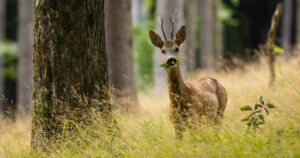
Are Deer Herbivores?
There have been some odd stories circulating lately of deer munching on meat. If you’ve come across them (or if you’re just curious about what deer eat) you may ask “Are deer herbivores?” In today’s
Discover the dietary needs and preferences of deer. Learn the foods deer look for season-to-season in different places around the globe.
On this page you are invited to browse our latest articles about the dietary preferences of deer around the world.
Discover what plants deer will seek out in your garden, and learn how the digestive system of deer works. This will help you understand why deer eat the foods that they do, and why their diet changes from one season to the next.
Scroll down to learn what deer eat (and what they don’t).

There have been some odd stories circulating lately of deer munching on meat. If you’ve come across them (or if you’re just curious about what deer eat) you may ask “Are deer herbivores?” In today’s
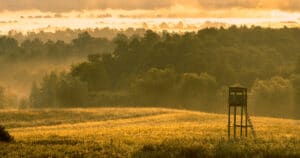
If you’re getting started with hunting, feeding deer probably hadn’t occurred to you as a strategy. But planting food for your prey can be a great way to hunt them. After all, when you plant
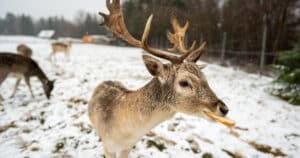
During the winter, it’s hard for deer to find food, so deer lovers like to help them out by leaving food in their backyard or in a deer feeder. We often have leftover bread, so
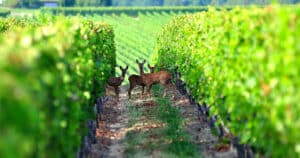
Do you have grape vines on your property and deer have been raiding them? Or maybe you want to offer some treats to the deer in your area, and you think grapes would be a
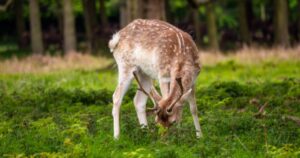
The deer digestive system is unique and designed to digest food in stages, allowing ungulates to extract maximum nutrition from the forage they consume. In this article we’ll discuss what deer eat, how they eat,
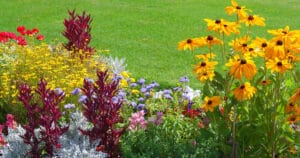
There’s nothing worse than putting a lot of time and effort into your garden, just to have it devoured by deer. Do you live in an area with a large white-tailed deer population? Maybe you’ve
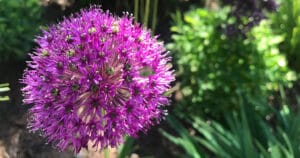
If you live in an area with a large deer population and take pride in your garden, how on earth do you keep those pesky cervids off your property? Deer enjoy few things more than
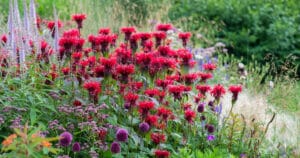
If there are deer in the area and you have a garden, these animals will probably invade your property at some point. There’s nothing worse than planting a beautiful garden only to have it turned
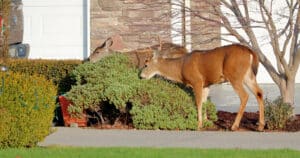
Shrubs are a mainstay and foundation plant for beds and borders on many properties. They’re great for increasing your home’s curb appeal. But if you live in an area with a large deer population, you
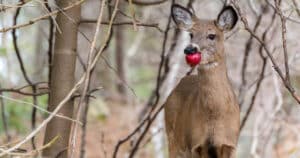
Deer are one of the most recognized animals in North America. Most people have seen a whitetail deer, while hunters specifically will spend a lot of time with these animals. Still, how many people know
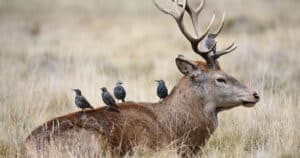
Deer are known for being friendly, peaceful herbivores, which means they only eat vegetation and never meat. While this is accurate for the most part, they have been known to eat meat from time to
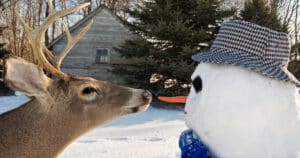
Whether you’re a gardener or a hunter, it’s important for you to understand what deer eat so you can use that to your benefit. Deer have a broad diet and what they eat changes by
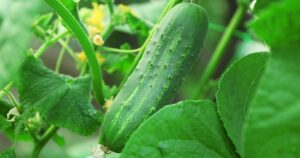
Most of us love cucumbers because of their delicious taste and nutritional benefits. Maybe you even grow cucumbers in your vegetable garden. If there are deer populations in your area, you may wonder whether they
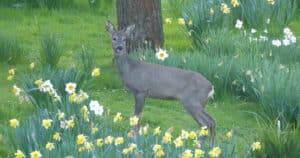
Gardening gets tricky when you live in an area with a deer population. After all, cervids (deer) find many garden plants and flowers quite a tasty treat. Maybe you’ve already noticed that deer are eating
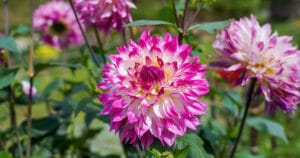
Dahlias are beautiful flowers and they’re easy to grow, making them one of the most popular plants for home gardeners. If you live in an area with deer, you’re probably eager to protect your dahlias
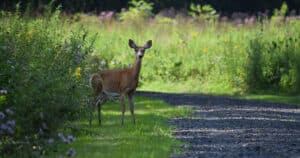
As herbivores, deer eat a wide variety of plants and flowers. If you’re like most homeowners, you like planting beautiful flowers in your garden. But if you’ve got a lot of deer in the area,
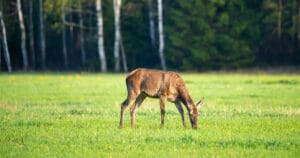
Maybe you assume that grass must be one of the white-tailed deer’s favorite foods. Maybe these cervids even munch on your lawn. But that isn’t the whole story. The truth is while the answer is
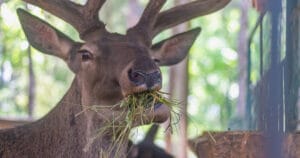
Deer are known for eating just about anything. After all, a deer’s diet is extremely diverse, and it can vary season-to-season to support varied nutritional needs. Keep reading to find out whether deer eat hay.
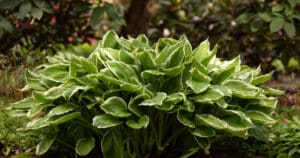
The large, beautiful leaves and the mild scent of their summer blooms make Hosta attractive and irresistible to gardeners. Homeowners with a green thumb love planting this shade-loving perennial in their gardens. But if you’ve
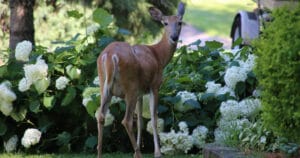
Keeping your plants safe from pests and animals is a big concern if you have a garden or plan on building one. Especially if your home is near a forest or wildlife reserve, you’ll certain
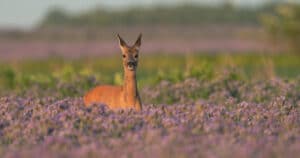
Lavender is a great herb for brightening up your garden. It smells fresh, is easy to grow, and has many uses. But if you grow it, do you have to worry about your hungry local
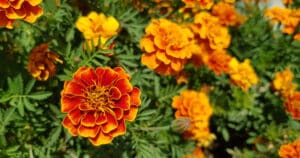
The cheerful color and look of marigolds make them popular garden additions. But if you live in an area with a large deer population, you’ve got to consider whether these cervids will raid your flowerbeds.
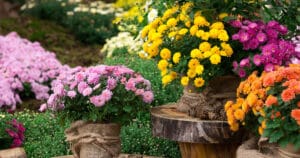
If you have a garden and there are deer in the area, you’ve got to know how to protect your flowers. After all, deer are herbivores, and they enjoy eating a wide variety of plants
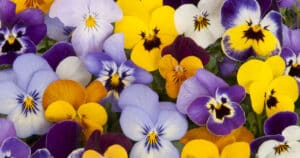
Pansies are a delightful addition to any garden. But if you live in an area with white-tailed deer, then you’re surely asking if your precious flowers are safe, or if you need to take steps
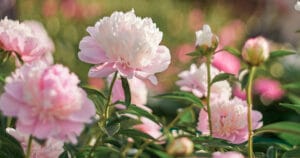
Deer eat pretty much every kind of vegetation, and they are certainly fond of munching on garden flowers. If you have a garden and live in an area with deer populations, you probably know how
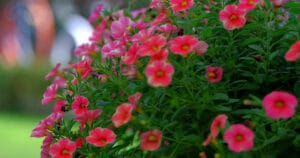
There’s a good reason petunias are so popular. These colorful and fragrant flowers are a great addition to any garden. But if you live in a deer-populated area, you probably wonder if deer eat petunias.
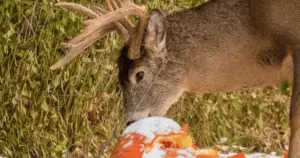
Whether you grow your own pumpkins and have a thief nibbling on your crop, or your family jack-o-lantern is missing part of his head, it’s natural to wonder who is to blame. You suspect several
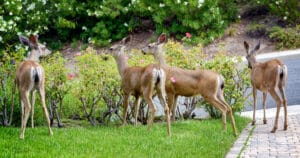
Has something been munching at your roses? If so, maybe you are at a bit of a loss figuring out the culprit. If you live in a suburban or rural area where there are deer,
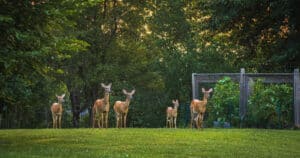
Tomato growers with deer populations in the area should know that these animals will be tempted to help themselves to a meal. You should be aware of the deer diet so you can better understand
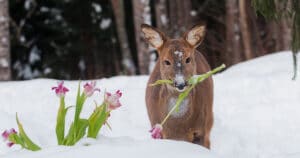
Many different kinds of critter will raid your garden if they get the chance. It may surprise you, but one of those is quite large: the deer. Deer won’t usually come into gardens during the
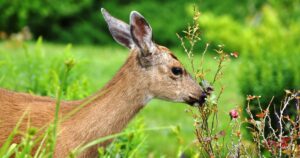
Have you invested time and money in your garden? It’s time to stop deer from using your property as a tasty buffet! Let’s explore how to keep deer from eating plants in your garden, looking
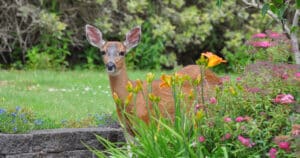
Having a garden on your property offers many benefits. A flower garden creates a spot where you can relax and recharge. But you’ve got to know how to protect your plants from pests, weeds, and
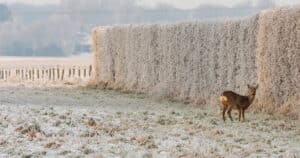
Do you have a large deer population in your area? Take measures to keep these cervids away from your garden. If you don’t, any flowers and other plants that deer like to eat (and there
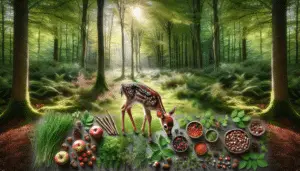
Understanding a Fawn’s Diet in the Early Stages of Life Fawns, or baby deer, are delicate creatures and their nutritional needs are quite specific to ensure healthy growth and development. When born, a fawn’s diet
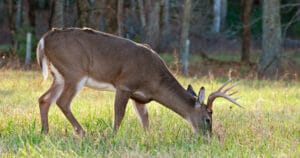
If you’re a photographer or hunter on the lookout for white-tailed deer, one of the most important questions you’ve probably asked yourself is what does a white tailed deer eat? Understanding the diet of this
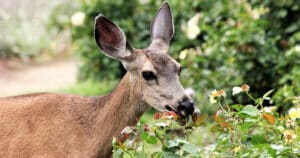
Do you live in an area with a deer population? It’s certainly not unusual for deer to venture onto private property to munch on plants and flowers. If you’ve had problems with deer demolishing your
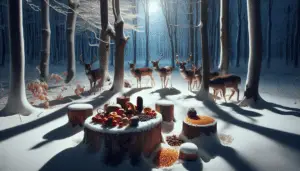
Understanding Deer Nutritional Needs During Winter As temperatures drop and the landscape becomes a frosty expanse, the dietary requirements of deer intensify. Vital nutrients become scarcer, and the search for food turns more rigorous. Understanding
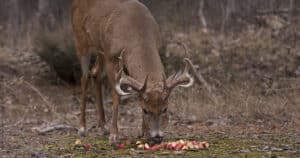
If you live in deer territory, there is no doubt that these graceful woodland creatures will pay you a visit. Wild deer traverse the lands freely, and we humans like to supplement their diets by
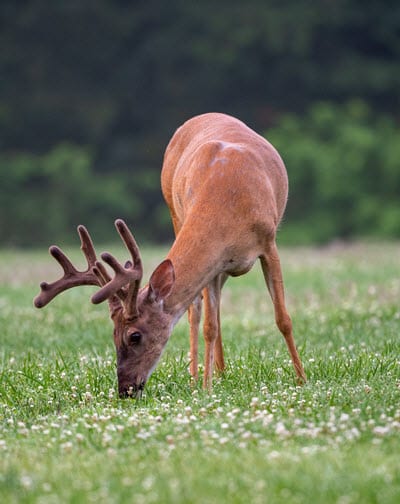 Like other animals, deer have their own preferred foods. And the type of food they eat often depends on the time of year.
Like other animals, deer have their own preferred foods. And the type of food they eat often depends on the time of year.
The species of deer and their native habitat also play a role in the natural diet of each individual deer.
Generally, deer eat food from these four distinct categories:
Deer also eat lichens and mushrooms.
Let’s take a look at these nutrition sources and find out what deer tend to eat most often during different seasons.
But first, let’s start by exploring the favorite foods of most deer, and why they like to eat some plants more than others.
Most of a deer’s diet consists of forbs and browse. The only season where this isn’t true is in the fall months. During that time of year, deer prefer mast (hard mast, such as acorns and soft mast, such as berries). Forbs, a term that signifies weeds and broad-leaved plants, are on the deer’s menu. Browse for deer includes stems and the woody part of leaves.
Like humans, deer have favorite foods. This doesn’t mean that they get to eat their favorited foods at every time of year. If a deer could choose, it would always eat nuts and fruit. Some of this animal’s favorite treats are acorns, beechnuts, hickory nuts, and pecans. Deer adore persimmons, blackberries, apples, and blueberries. Deer also enjoy foods such as sedges, clover leaves, sumac foliage, dogwood fruit, and wild crabapples.
The deer’s digestive system means that it can effectively digest the tough cellulose found in many of its foods. For example, deer eat plant parts, grass blades, and leaves. Microorganisms allow symbiotic links between the deer digestive system and the foods it needs to digest and process to use for nutrients for the animal.
There are microorganisms in the deer’s digestive system that are key to cellulose digestion. These microorganisms help the deer’s digestive system take part in the cellulose, breaking them down into a form that the animal’s digestive system can use.
A deer’s stomach has four chambers. The first of these chambers is called the rumen, and this is used to store the food. As the deer has a rumen, it means the animal can eat a large amount of food at one time and then digest it at a later time.
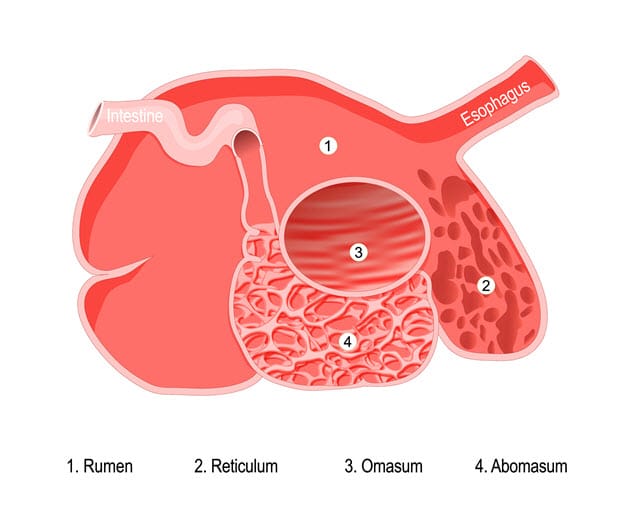
The fact that deer eat extremely quickly makes their digestive system especially important. Deer eat so quickly that these animals may fill their bellies within an hour or two. How quickly this happens, however, depends on how much food they eat and the type of food they ingest.
Deer don’t chew very much. In fact, they tend to only chew enough for the food to be swallowed. When deer do this, it’s referred to as the deer’s “first chewing.”
The dietary needs and preferences of deer vaary according to the time of year, their stage in the annual reproductive cycle, and the availability of different foods in their local habitat.
You can learn about what deer eat at different times of the year below:
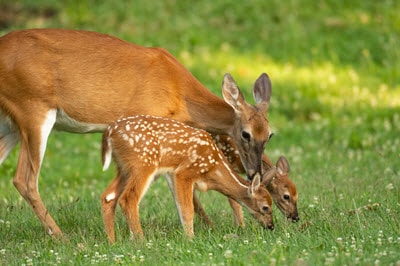 Deer are in food paradise when the spring finally comes to full fruition. As we all know, this time of year offers plenty of food, including fruit, tender shoots, buds, and grass. One of the several important reasons why spring food is so important for deer is the fact that this is the time of year when female deer give birth to fawns. The nursing fawns, of course, require a large amount of food to provide all the milk the young ones need.
Deer are in food paradise when the spring finally comes to full fruition. As we all know, this time of year offers plenty of food, including fruit, tender shoots, buds, and grass. One of the several important reasons why spring food is so important for deer is the fact that this is the time of year when female deer give birth to fawns. The nursing fawns, of course, require a large amount of food to provide all the milk the young ones need.
In the spring, deer are eager to recover from the difficulties of the winter. Even by as late as this time of year, bucks continue to build their strength back from the breeding season (as well as the winter, of course). They have to build back a lot of muscle, and they need high levels of protein.
Bucks also need an especially large amount of phosphorus and calcium in the spring, to help develop the new antlers they need. Protein is required for this, as well.
In the spring, female deer are getting near to when they’ll give birth to fawns. The does will need good nutrition so they’re strong and healthy enough for adequate nursing. When does nurse, they will lose a lot of their stores of fat. This happens in the late spring and summer.
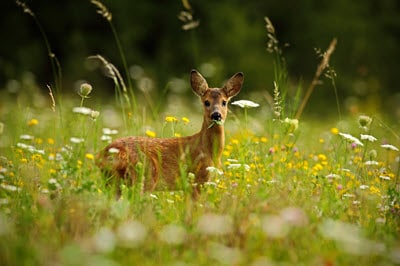 In general, in the summer deer gravitate towards green matter. Green matter will play a much larger part in their diets than at other times of year. Deer will also eat acorns, corn, and nuts that come across during the summer.
In general, in the summer deer gravitate towards green matter. Green matter will play a much larger part in their diets than at other times of year. Deer will also eat acorns, corn, and nuts that come across during the summer.
Summer is a paradise when it comes to food for deer. There is a cornucopia of nutritional sources for deer during this time of year. From green matter to fruits and other food types, summer is a fun eating time for deer.
Deer love eating fruit when they can find it. Examples of fruits they may eat include peaches, mulberries, plums, and crabapples, pears, and apples that ripen late. In the summer, mast makes up about 11 percent of the deer’s diet. An example of mast eaten during this time of year is berries.
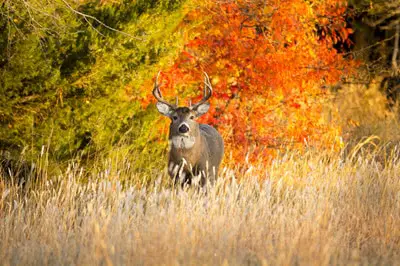 Mast makes up about 28 percent of the deer’s diet in the fall. The main kind of mast they eat is hard mast, including acorns. Der tend to eat a lot of food with a high fat level in the fall. An example is acorns.
Mast makes up about 28 percent of the deer’s diet in the fall. The main kind of mast they eat is hard mast, including acorns. Der tend to eat a lot of food with a high fat level in the fall. An example is acorns.
There are two kinds of mast: hard mast and soft mast. As discussed, hard mast refers to nuts. Soft mast, on the other hand, is fruit. An example of a common soft mast deer like to eat in the fall is berries. The deer’s most important goal during the fall is to fatten up for winter. This is important, as food supplies during the cold and snowy months may be scarce.
Deer start the process of fattening up in the summer and continue all through the fall. Foods such as acorns and fruit are perfect for putting weight on deer.
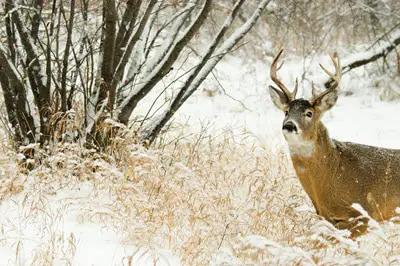 In the winter, deer, like many other animals, need more calories to help keep them comfortable and warm. To make things more complicated, deer have a harder time finding enough nutritious food in the winter. Remember, not only does the weather cause extra wear and tear on deer, but these animals must also expend extra energy to make their way through the snow and ice. Before the winter begins, deer will go to great lengths to get ready for this challenging season.
In the winter, deer, like many other animals, need more calories to help keep them comfortable and warm. To make things more complicated, deer have a harder time finding enough nutritious food in the winter. Remember, not only does the weather cause extra wear and tear on deer, but these animals must also expend extra energy to make their way through the snow and ice. Before the winter begins, deer will go to great lengths to get ready for this challenging season.
In the winter months, deer will eat whatever food they can find. As food is scarce during those months, deer are mindful to get as well-fed as possible before the cold months of the year arrive. During the winter, deer most often focus on mast, such as berries, pears, apples, and acorns. Deer are resourceful, and if they need to, they will stand up on their back legs to reach whatever they need to. For example, deer enjoy winter apples. Deer are able to stand up on their rears legs to retrieve these.
Winter is a challenging season for deer. Of course, snow and cold are major reasons for this. Another is the fact that a deer’s metabolism changes significantly during the year. Specifically, it changes between the spring and summer, as well as the fall and winter. During cold weather, deer are generally much less active than they are at other times of year. The cold temperatures and limited food access leads to deer metabolism slowing down.
As deer have low metabolism in the winter and food is difficult to find during that season, deer may eat more woody browse and bark. Examples may include woody types of plants such as four-wing saltbush and cedar elm. Another type of food deer may eat during the winter is Spanish Moss. This is a type of gray lichen and is often found developing on dead or dying balsam or spruce trees. Spanish Moss is a unique type of plant, as it’s half fungi and half lichen. It is full of useful nutrients.
The exact foods a deer eat will depends on its region and environment.
This animal is highly adaptable, and there are a wide range of grasses, browse, forbs, fruits, and nuts that whitetail deer will devour when they get the chance.
Without exception, deer must stick to a natural diet and should never be fed by humans. These animals know by instinct which foods they should and shouldn’t eat, and they will find the foods they need on their own.
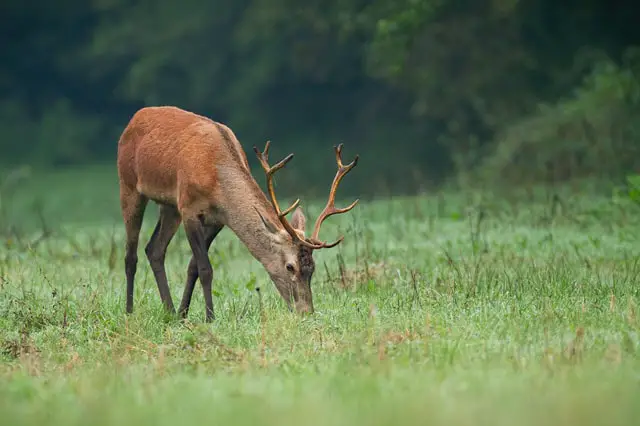
Never try to give deer foods that they wouldn’t normally eat during the season in question.
Never try to feed deer. While you may love these animals and just want to help when they seem to be short of food, you may cause them harm by offering them food.
One reason for this is that you might give them inappropriate foods. The main reason, however, is that feeding deer will cause the animals to congregate in large numbers.
This can become a major problem for the following reasons:
Deer stay away from plants with scents or textures they dislike, as well as plants they know by instinct are harmful or poisonous to them.
Many gardeners help prevent deer coming onto their property and decimating their garden by planting deer-resistant plants, often ones with strong scents, or rough or fuzzy leaves.
With proper planning, you can even use deer-resistant plants as a buffer to keep deer away from flowering plants they enjoy eating.
Maybe you’ve heard gardeners talk about deer-resistant plants. Deer-resistant plants, put simply, are plants that deer dislike. In other words, deer won’t be attracted to them if you plant them in your garden.
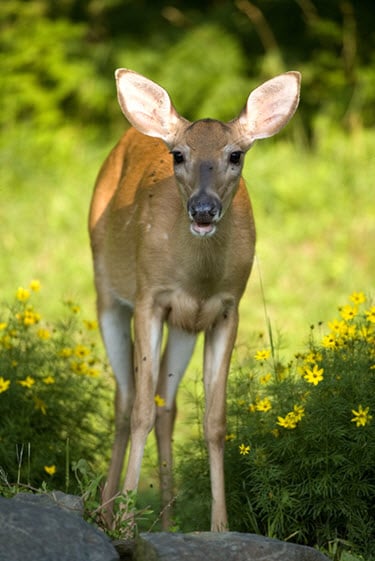
Deer generally dislike plants that have strong perfumes. Examples include lavender, ornamental salvias, sages, bearded irises, peonies, and lavender.
Below is a list of deer resistant plants:
Another way you can use plants to ward off deer is to plant a fence of roses or barberry with thorns around your property.
There are several plans that are poisonous to deer. If a deer eats one of these plants, the animal will end up sick at the very least. In some cases, severe illness or death may even occur. Examples of annuals that are poisonous to deer include comfrey, blue cardinal flower, bee plant, and certain kinds of prairie flax, some types of poppies, nicotiana, dusty miller, and datura. Other plants poisonous to deer include daffodils, narcissus, lupine, foxglove, larkspur, and century plants.
There are some perennials that are poisonous for deer, including night-blooming jasmine, Lindheimer’s senna, joe-pye weed, and datura. Other are wooly paperflower, windflower, two-leaved senna, and red-hot poker.
Clearly, deer eat a wide range of foods. The exact foods they tend to eat vary by season and their needs at a given time of year. For example, in the late summer and fall, deer must eat large amounts of high-calorie food to fatten up and get ready for the winter.
Never try to feed deer. This will be detrimental to deer health and create potential hazards for the animals. Like other wild animals, deer should never feel too comfortable around people. When a deer sees humans as a food source, that is always a bad thing.